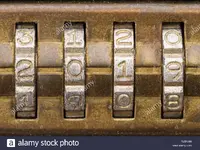- Joined
- Mar 16, 2011
- Messages
- 14,045
- Reaction score
- 16,879
- Golden Thread
- 1
- Location
- San Diego
- 🥇 Banner finds
- 1
- 🏆 Honorable Mentions:
- 3
- Detector(s) used
- Equinox 800/900, Fisher Impulse AQ, E-Trac, 2 Excal 1000's, White's TM808, VibraProbe, 15" NEL Attack, Mi6, Steath 920ix and 720i scoops, TRX, etc....
- Primary Interest:
- All Treasure Hunting
I have found many of these brass rings on a local beach that also has lots of military copper and brass items. I also finally found what seems to be the item to which the rings attach. The shaft is ferrous (steel?) and the most complete one also has a brass nipple on the opposite end along with 54H stamped into the side of it. There may be other numbers as I haven't cleaned off all the encrustation yet. I'm a little leery of tapping it with a hammer until I know more about it!  When I first started finding them, I thought they were just cheap copper/brass finger rings, but, when I saw that the inside of the rings have splines, that changed my mind.
When I first started finding them, I thought they were just cheap copper/brass finger rings, but, when I saw that the inside of the rings have splines, that changed my mind.
 When I first started finding them, I thought they were just cheap copper/brass finger rings, but, when I saw that the inside of the rings have splines, that changed my mind.
When I first started finding them, I thought they were just cheap copper/brass finger rings, but, when I saw that the inside of the rings have splines, that changed my mind.






